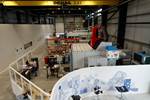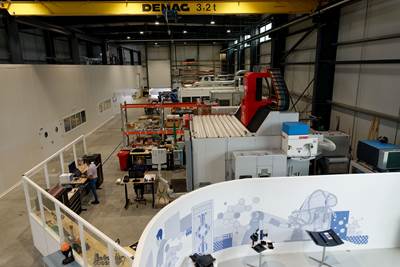Politics and subsidies
Composite Technology's editor-in-chief Jeff Sloan considers the implications for the U.S. composites industry of political calls to end the Production Tax Credit and Investment Tax Credit for wind energy and other sustainable forms of energy production.
It’s election season, and this time of the year we hear many messages and opinions designed to persuade, polarize, alienate and attract voters, as officeholders and their contenders solidify their place along the political spectrum. These messages are, in theory, based on established and accepted “facts,” but we all know that facts in the political arena are often presented selectively.
One example of this is a message I’ve heard more than a few times that focuses on federal government subsidies for alternative energy providers. The complaint from some candidates boils down to this: If alternative energy systems truly are a viable source of electricity supply, then they should be able to “stand on their own,” without subsidy from American taxpayers.
The issue revolves around the federal Production Tax Credit (PTC) and the Investment Tax Credit (ITC), which for our purposes applies to wind energy systems. The PTC provides an income tax credit of 2.1 cents/kilowatt-hour for production of electricity from utility-scale wind turbines. Since its creation in 1992, the PTC has been periodically renewed by the U.S. Congress, and the current PTC is set to expire Dec. 31, 2012. The ITC, passed in February 2009, provides a 30 percent investment tax credit in place of the PTC for wind energy facilities placed in service in 2009 and 2010, and for facilities placed in service before 2013 if construction begins before the end of 2010. The ITC and the PTC are designed to provide market stability and help wind energy producers establish a foothold in the American market.
Wind, however, is not the only energy source that enjoys taxpayer largesse. Coal and natural gas have received federal subsidies for decades, despite the fact that these energy sources can “stand on their own,” given how dependent our economy is on them for energy.
According to the Energy Information Admin. (EIA), which is part of the U.S. Department of Energy, subsidies and support allocated to electricity generation in fiscal year 2007 (the latest year available) included: $227 million for natural gas and petroleum liquids, $854 million for coal, $2.16 billion for refined coal and $724 million for wind. It’s hard to look at this and argue that wind energy is being unfairly favored.
This data, however, must be placed in context. EIA notes that because fossil fuels produce more energy, the cost of their subsidy per unit of production is less: $0.25/megawatt-hour for natural gas and petroleum liquids, $0.44/megawatt-hour for coal, $29.81/megawatt-hour for refined coal, and $23.37/megawatt-hour for wind. The implication is that the taxpayer dollar goes further when spent on fossil fuels, but one has to wonder why natural gas and coal need our help at all.
In any case, the unit cost of wind energy will decrease as more wind farms are brought online. Further, there is a broad effort to mandate energy supply from wind: 28 states have renewable electricity standards (RES) that require that some fraction (4 to 25 percent) of electricity come from renewable resources by a certain date (ranging up to 2025). In addition, the U.S. Congress is considering a national RES that would go a long way toward providing market stability for wind producers.
Ultimately, if we’re really serious about energy independence, government support of renewable energy technologies is not only reasonable, but necessary — and good not only for the composites community, but for all of us.
Related Content
What’s new for 2024?
ÂÌñÏ×ÆÞ discusses recent changes, upcoming events and strategies for the upcoming year.
Read MoreThere's a lot up in the air
Trade tensions and supply chain shifts — what the U.S.-China dispute means for aerospace and composites suppliers.
Read MoreHow has CW changed in the last year?
Upon his one-year anniversary as editor-in-chief of CW, Scott Francis looks back at some of the brand’s changes and hints at where it might be heading next.
Read MoreLooking at composites through the lens of U.S. history
When you’re a tourist with a background in writing for manufacturing it’s impossible not to notice all of the ways in which composites have resulted in significant milestones in the U.S. — historically and in the present.
Read MoreRead Next
Composites end markets: New space (2025)
Composite materials — with their unmatched strength-to-weight ratio, durability in extreme environments and design versatility — are at the heart of innovations in satellites, propulsion systems and lunar exploration vehicles, propelling the space economy toward a $1.8 trillion future.
Read MorePlant tour: Daher Shap’in TechCenter and composites production plant, Saint-Aignan-de-Grandlieu, France
Co-located R&D and production advance OOA thermosets, thermoplastics, welding, recycling and digital technologies for faster processing and certification of lighter, more sustainable composites.
Read More“Structured air” TPS safeguards composite structures
Powered by an 85% air/15% pure polyimide aerogel, Blueshift’s novel material system protects structures during transient thermal events from -200°C to beyond 2400°C for rockets, battery boxes and more.
Read More













